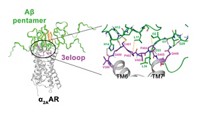Advertisement
Grab your lab coat. Let's get started
Welcome!
Welcome!
Create an account below to get 6 C&EN articles per month, receive newsletters and more - all free.
It seems this is your first time logging in online. Please enter the following information to continue.
As an ACS member you automatically get access to this site. All we need is few more details to create your reading experience.
Not you? Sign in with a different account.
Not you? Sign in with a different account.
ERROR 1
ERROR 1
ERROR 2
ERROR 2
ERROR 2
ERROR 2
ERROR 2
Password and Confirm password must match.
If you have an ACS member number, please enter it here so we can link this account to your membership. (optional)
ERROR 2
ACS values your privacy. By submitting your information, you are gaining access to C&EN and subscribing to our weekly newsletter. We use the information you provide to make your reading experience better, and we will never sell your data to third party members.
Neuroscience
Sending Huntington’s protein to the garbage
Researchers screen over 3,000 compounds to find small molecules that clear mutant huntingtin protein
by Laura Howes
October 31, 2019
| A version of this story appeared in
Volume 97, Issue 43
Researchers in China and the UK have found small molecules that seem to bind and help dispose of the protein implicated in Huntington’s disease. The findings could be a major step forward for treating the disease, researchers say (Nature 2019, DOI: 10.1038/s41586-019-1722-1).
Huntington’s disease is a fatal genetic disorder. It’s caused by a mutation that leads to a version of the huntingtin protein with a long portion made of the amino acid glutamine. When this protein misfolds, it aggregates in neurons, eventually causing the nerve cells to degrade and die.
Boxun Lu and coworkers at Fudan University, and their collaborators at the University of Plymouth, wanted to find a treatment that would help neurons clear out this harmful mutant protein. They screened over 3,000 compounds for ones that interact with both the mutant huntingtin protein (mHTT) and LC3B, which is involved in protein cleanup. After finding two hits, they looked for similar compounds and then tested those for activity. Their lead compounds reduced mHTT levels in human neuron cell cultures and changed the symptoms of Huntington’s disease in mouse and fly models. The researchers also used microscopy to find the compound-bound proteins in the autophagosome, a structure that degrades proteins.
Developing small molecules that bind specifically to mHTT to facilitate its clearance would represent a major advance, says Hilal Lashuel, who works to understand protein misfolding in neurodegenerative diseases at the Swiss Federal Institute of Technology, Lausanne (EPFL). However, Lashuel notes that the study didn’t explore the structural basis of the compounds' specificity or how they link the two proteins.
Lu says he sees these compounds as an entry point to therapeutics. Meanwhile, Lashuel says, there are details missing that he is interested in. Luckily, the compounds tested by Lu and colleagues are commercially available. “We have already ordered these compounds,” Lashuel says of his group, because the researchers see the potential and plan to explore the mechanism in greater detail.
CORRECTION
This story was updated on Nov. 1, 2019, to clarify Lu's affiliation and a sentence about the structural basis of the compounds' specificity.




Join the conversation
Contact the reporter
Submit a Letter to the Editor for publication
Engage with us on Twitter